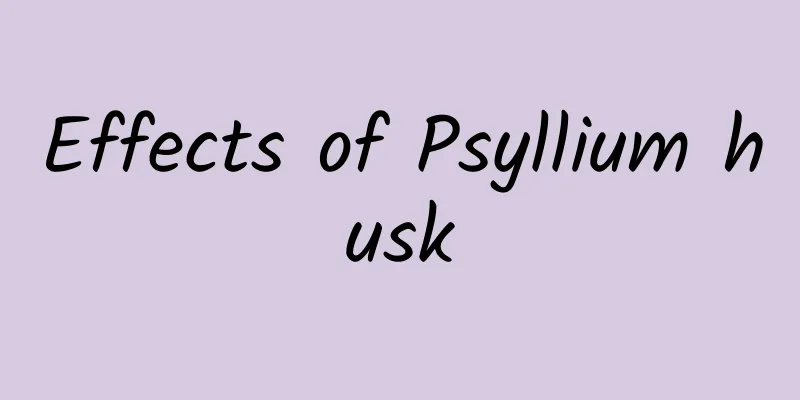Effects of Psyllium husk

|
Psyllium husk is the husk of the seeds of the artificially cultivated Psyllium genus (Latin name: Plantagoovata). Because it contains soluble dietary fiber, it is widely used in medicines, health products, food, beverages and concentrated feed products. Nutritional elements of psyllium husk The shell of Psyllium ensifolium contains collagen (Mucilage, psyllium hydrophilic glue), which is composed of carboxylic acid, maltitol, semi-natural uronic acid, semi-dry fat oil and a small amount of aucubine. Psyllium husk contains more than 80% dietary fiber, among which the ratio of soluble dietary fiber to insoluble dietary fiber is 7:3. Other nutrients mainly include glucosides, protein, sugar, vitamin B21 and choline. Instructions for using Psyllium Husk Health purpose: For people over 12 years old, take 3-4 grams each time, 2-3 times a day; for people over 6-12 years old, take less. Treatment purpose: 7-10 grams/time, 2-3 times/day pay attention to: 1) This product cannot be swallowed immediately! It should be dissolved in liquid drinks such as water or milk. 2) For every 3 grams of dry tablets, you should consume at least 200 mL of water. Key Role of Psyllium Husk In traditional Indonesian medicine, psyllium is used for laxatives, diarrhea, hemorrhoids, ulcers, bladder problems and high blood pressure. Psyllium is also commonly used to fight skin irritations, including poison ivy reactions and insect bites. 1. Improve digestion The seeds of Psyllium are the edible part, which is composed of a sugar molecule called Arabynoxylan in the seed shell. This unique sugar molecule absorbs water quickly to form a transparent viscous substance. It absorbs moisture in the colon to produce a viscous low-echo area, which can improve the lubrication of excrement and the intestinal cavity, thereby playing a role in lubricating the intestines and relieving constipation. Therefore, Psyllium has been used to lubricate the intestines and relieve constipation since ancient times. Modern pharmacological research has shown that Psyllium not only has a laxative effect, but also increases the amount of feces. The sugar content of Psyllium can produce a bloating laxative. When we swallow its seed coat powder and water at the same time, it will produce a micellar mass of 8-14 times the volume, which can keep the feces moist and soft, and the micellar mass will also stimulate the intestinal cavity to produce a reflex contraction effect, thereby promoting normal excretion of the intestine. |
<<: Effects and functions of Codonopsis pilosula pictures
>>: Side effects and contraindications of costusroot
Recommend
The efficacy and function of Tibetan Impatiens
What are the functions of Tibetan Impatiens? As a...
CNNIC: The 38th Statistical Report on the Development of Internet in China in 2016 - Development of Business Transaction Applications (IX)
Report download: Add 199IT official WeChat [i199i...
The efficacy and effects of Chamagu
The efficacy and function of Chamagu is to regula...
Does drinking Panax notoginseng powder harm the liver?
Panax notoginseng powder can be used to stop blee...
Ginseng, Astragalus and Wolfberry Wine Recipe
Ginseng, astragalus and wolfberry are all common ...
The efficacy and function of stone parasite
Stone parasite is a common Chinese medicine. It c...
The efficacy and function of Artemisia
What are the effects of Artemisia annua? As a tra...
The efficacy and function of licorice
Licorice is a very common herb in life. There are...
Australian e-commerce market report for November 2022
Affected by the Black Friday and Cyber Monday p...
He overturned the "China is poor in oil" theory, and the Daqing Oilfield was born because of him
On the road of scientific exploration, countless ...
How big are the health risks of using plastic bottles?
Many elders have this habit: no matter whether it...
The efficacy and function of water cotton
After thousands of years of sedimentation and acc...
What to do if WiFi signal is poor and speed is slow? Maybe your router is not placed properly
Do you often encounter such frustrating situation...
Don't lose weight randomly! These unreliable weight loss methods may damage your bones
The matter of losing weight The most difficult pa...









